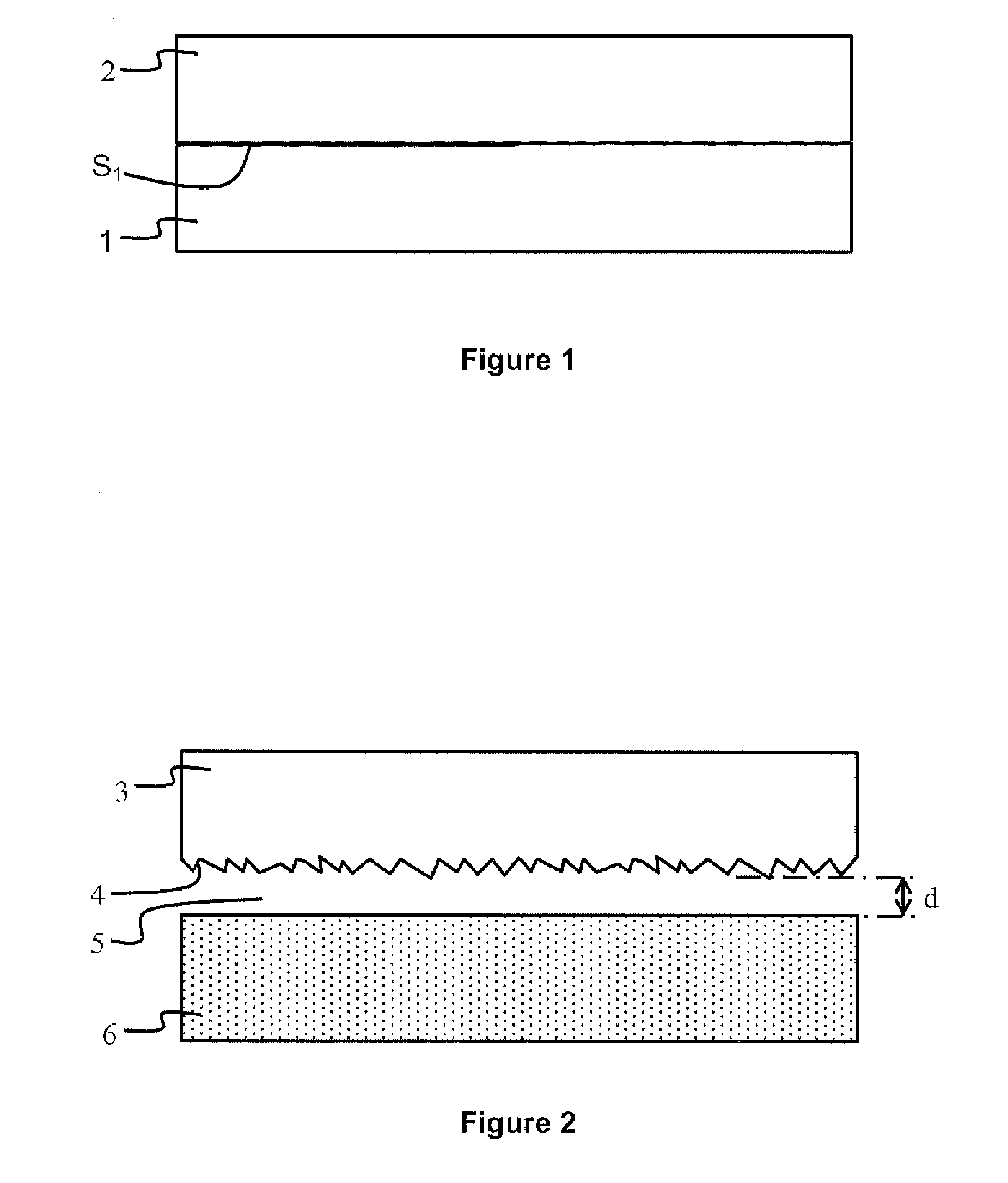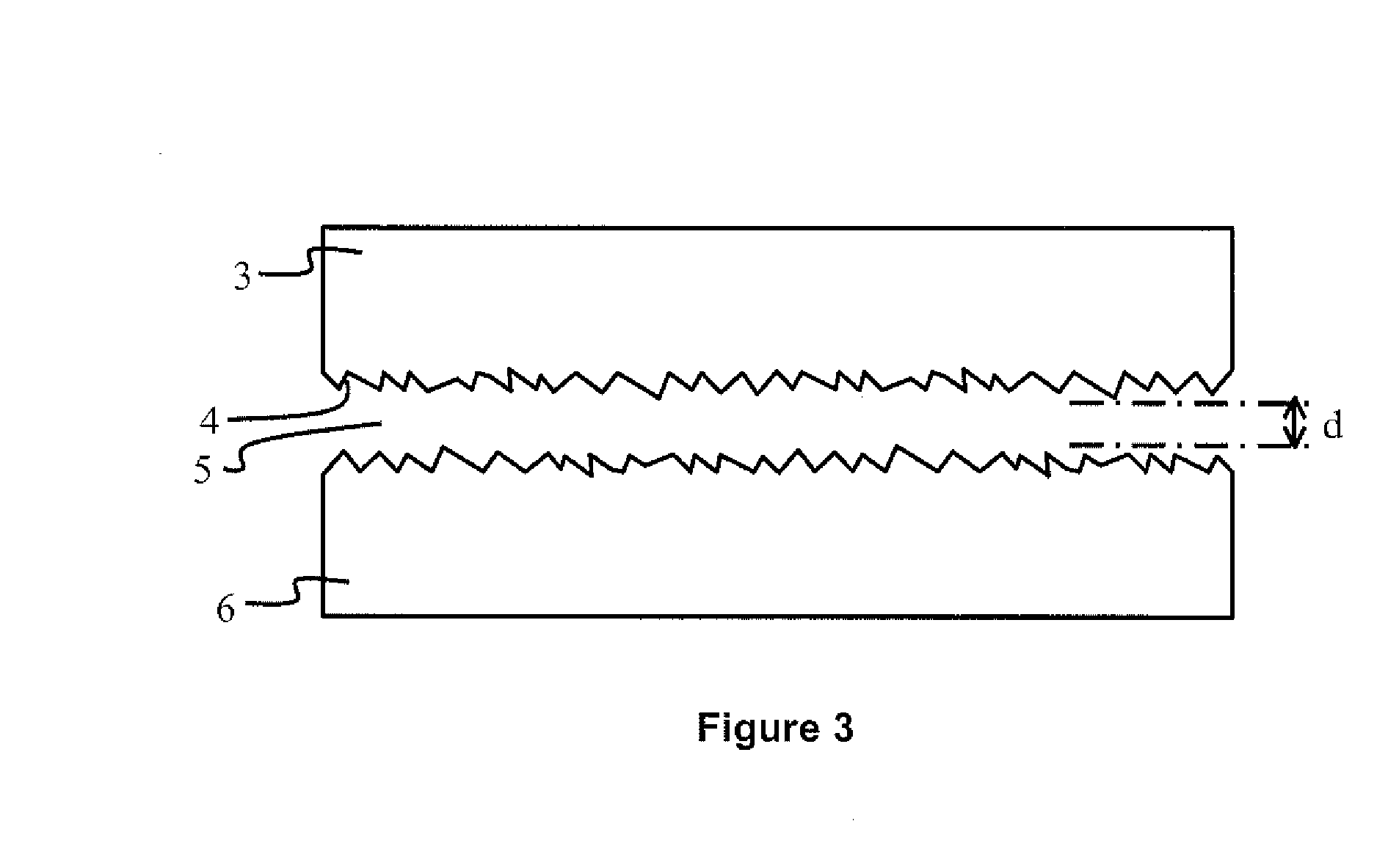Process for smoothing a surface via heat treatment
a heat treatment and surface technology, applied in the field of smoothing process, can solve the problems of large roughness, incompatibility with the targeted application, and requires a relatively long implementation time for very rough surfaces, so as to reduce the roughness of the surface, avoid the use of dangerous gases, and facilitate the effect of implementation
- Summary
- Abstract
- Description
- Claims
- Application Information
AI Technical Summary
Benefits of technology
Problems solved by technology
Method used
Image
Examples
Embodiment Construction
[0015]A dependable, practical and inexpensive means for producing substrates comprising a semiconductor alloy based on at least two elements chosen from Ga, As, Al, In, P and N having at least one smooth surface devoid of structural defects consists in using smoothing by heat treatment with standard equipment and atmospheres by locally creating an atmosphere preventing a great decomposition of this alloy, at the level of the surface to be treated.
[0016]For activation of dopants or to improve the electric properties of substrates made from semiconductor alloys, for example from GaAs or InP, it has already been proposed to perform heat treatment by placing two substrates on top of one another. This solution, called proximity cap, enables the decomposition phenomenon of substrates made from semiconductor alloys to be limited when these specific heat treatments are performed.
[0017]As represented in FIG. 1, the proximity method consists in placing a protection substrate 2 on the useful s...
PUM
 Login to View More
Login to View More Abstract
Description
Claims
Application Information
 Login to View More
Login to View More - R&D
- Intellectual Property
- Life Sciences
- Materials
- Tech Scout
- Unparalleled Data Quality
- Higher Quality Content
- 60% Fewer Hallucinations
Browse by: Latest US Patents, China's latest patents, Technical Efficacy Thesaurus, Application Domain, Technology Topic, Popular Technical Reports.
© 2025 PatSnap. All rights reserved.Legal|Privacy policy|Modern Slavery Act Transparency Statement|Sitemap|About US| Contact US: help@patsnap.com



